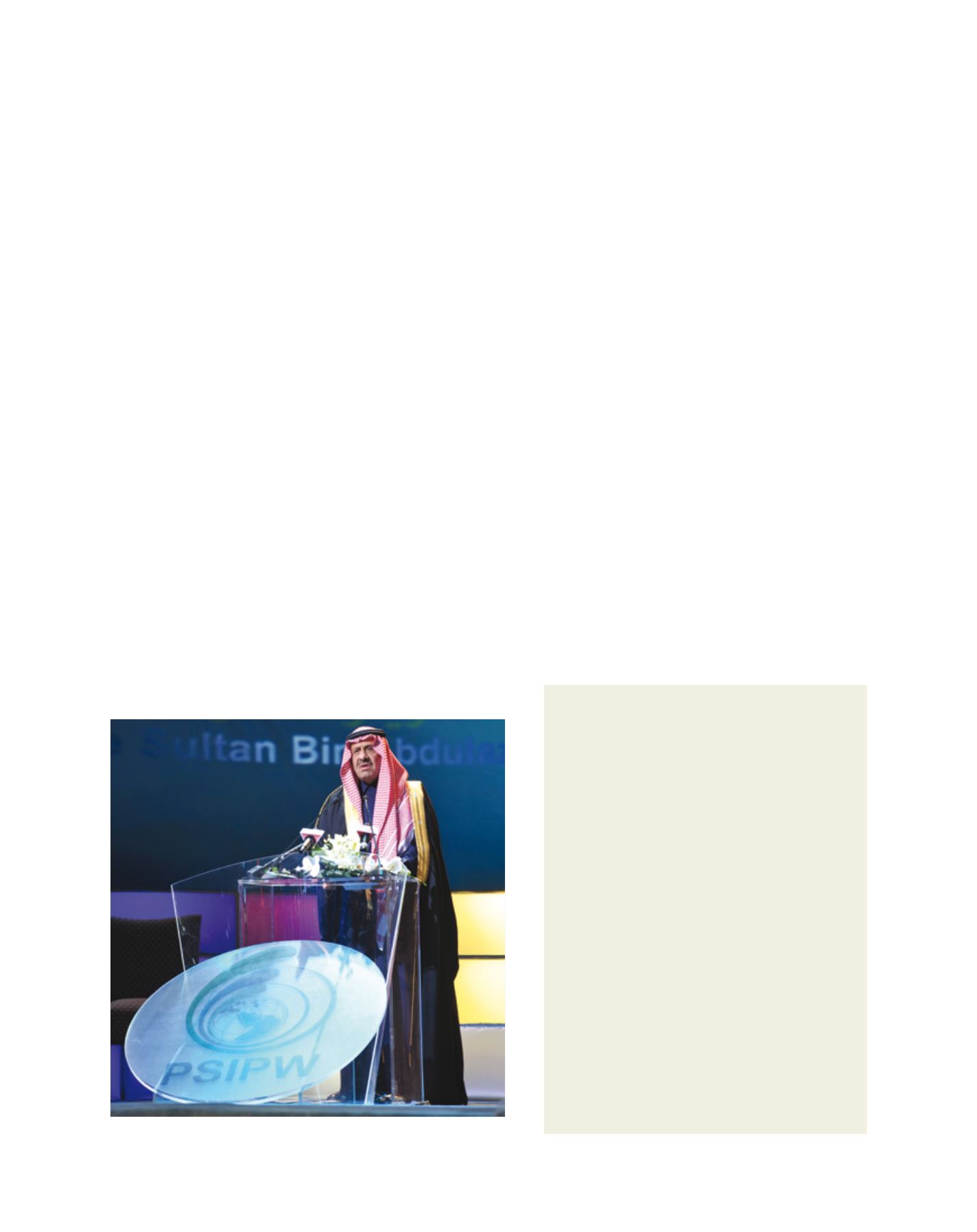

[
] 326
I
nternational
C
ooperation
on
W
ater
S
ciences
and
R
esearch
(mathematical modelling), interpretation of past and
present biological records, and field experimentation.
The joint Princeton-Lausanne research group, which
the two prizewinners built through years of collabo-
ration, has produced exemplary work. Some of their
research shows how river networks act as ecologi-
cal corridors and how they influence the spread of a
water-borne disease like cholera, which still plagues
society today.
Other 4th Award prize winners included Bart Van
der Bruggen (Katholieke Universiteit, Leuven), who
won the Alternative Water Resources Prize for his
work in the use of nanofiltration membrane technol-
ogy for industrial water recycling; and Dr Soroosh
Sorooshian (University of California, Irvine), who
won the Water Management and Protection Prize for
his development and refinement of the Precipitation
Estimation from Remotely Sensed Information using
Artificial Neural Networks (PERSIANN) system. This
is a method that uses artificial neural networks – a
form of artificial intelligence – and infrared (GOES IR)
and TRMM satellite data to estimate global precipita-
tion from remotely sensed data.
Prizewinners for the 5th Award, 2012
PSIPW again honoured major water-related innova-
tive research in its 5th Award. Dr Ashok Gadgil and
his team at the University of California, Berkeley, won
the Creativity Prize for developing Electrochemical
Arsenic Remediation (ECAR), an innovative and effec-
tive method of treating the arsenic contamination of
Bouwer, Dr Howard S. Wheater, Dr Patricia Gober, Dr Wolfgang
Kinzelbach and many other prestigious water scientists. In 2010, at
its 4th Award, PSIPW reached a turning point in its history when
it presented the Creativity Prize for the first time. This newly-inau-
gurated prize was shared by two teams of researchers for two very
different water-related achievements.
One of the joint prizewinners of the 4th Award was the team
of Dr Marek Zreda (University of Arizona) and Dr Darin Desilets
(Sandia National Laboratory, United States). They were awarded
for their groundbreaking work on the Cosmic Ray Probe, a tech-
nology that uses cosmic-ray neutrons to measure soil moisture
content and snow pack thickness over an area of tens of hectares
– passively, non-invasively and economically. These measurements
provide hydrologists and atmospheric scientists with an entirely new
perspective on water near the interface between the ground and the
atmosphere, as well as giving water managers, engineers and agricul-
turalists an invaluable but economical new tool to monitor a critical
part of the hydrologic cycle. Before their invention, measuring tech-
niques only operated at the point scale (for example, invasive probes
inserted into soil or snow) or at the kilometre scale (for example,
satellite and airborne remote sensing images). However, many
hydrologic processes operate at a scale of tens to hundreds of metres
– and it is this critical ‘blind spot’ that the Cosmic Ray Probe reveals.
The second team to share the Creativity Prize was that of
Dr Ignacio Rodriguez-Iturbe (Princeton University) and Dr
Andrea Rinaldo (École Polytechnique Fédérale de Lausan).
They were honoured for inventing and developing the science
of Ecohydrology. Bridging the gap between the physical and
life sciences, Ecohydrology is a multi-disciplinary research field
borrowing from a number of classic disciplines in the physi-
cal and life sciences, which aims to achieve a unified picture of
water-supported biological dispersion. In practical terms, this new
research field presents itself as a comprehensive blend of theory
Image: PSIPW
HRH Prince Khaled Bin Sultan Bin Abdulaziz heads the Prize Council of PSIPW
5th Award: focus on arsenic
In 2012, PSIPW recognized two research teams whose work
relates to the arsenic contamination of ground water, a
crisis threatening the lives of millions of people worldwide –
particularly in Bangladesh where it is causing what may be
the greatest mass poisoning in human history.
Why is it happening? Dr Charles Franklin Harvey of
MIT and Dr Abu Borhan Badruzzaman of the Bangladesh
University of Engineering and Technology won the
Groundwater Prize for providing the answer. What they
found, after a decade of painstaking research, is that a
relatively recent shift in geochemical conditions is mobilizing
arsenic from the sediments. Though the quantity of
arsenic is not particular large in the contaminated areas,
a large proportion is being dissolved in the water, creating
toxic concentrations. They also learned how land-use
changes and groundwater pumping affect arsenic levels.
Understanding these processes provides guidance for
where wells can be placed and how deep they need to be to
extract safe water.
The second critical question is: what can be done to
provide safe water for people in affected areas? Dr Ashok
Gadgil and his team at the University of California, Berkley
won the Creativity Prize for developing an innovative,
cost-effective method of treating arsenic contamination
using electrocoagulation, ECAR. They did not stop with
technological development. They also considered the
disposal of wastes and conducted a thorough analysis of
ECAR’s implementation in society. The estimated price
of safe ground water at four US cents per ten litres is
comparatively low and acceptable even for the very poor.


















